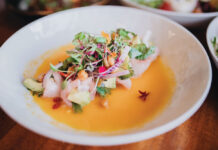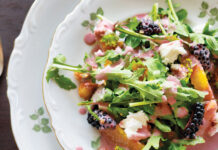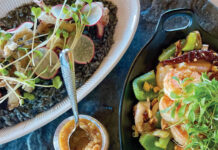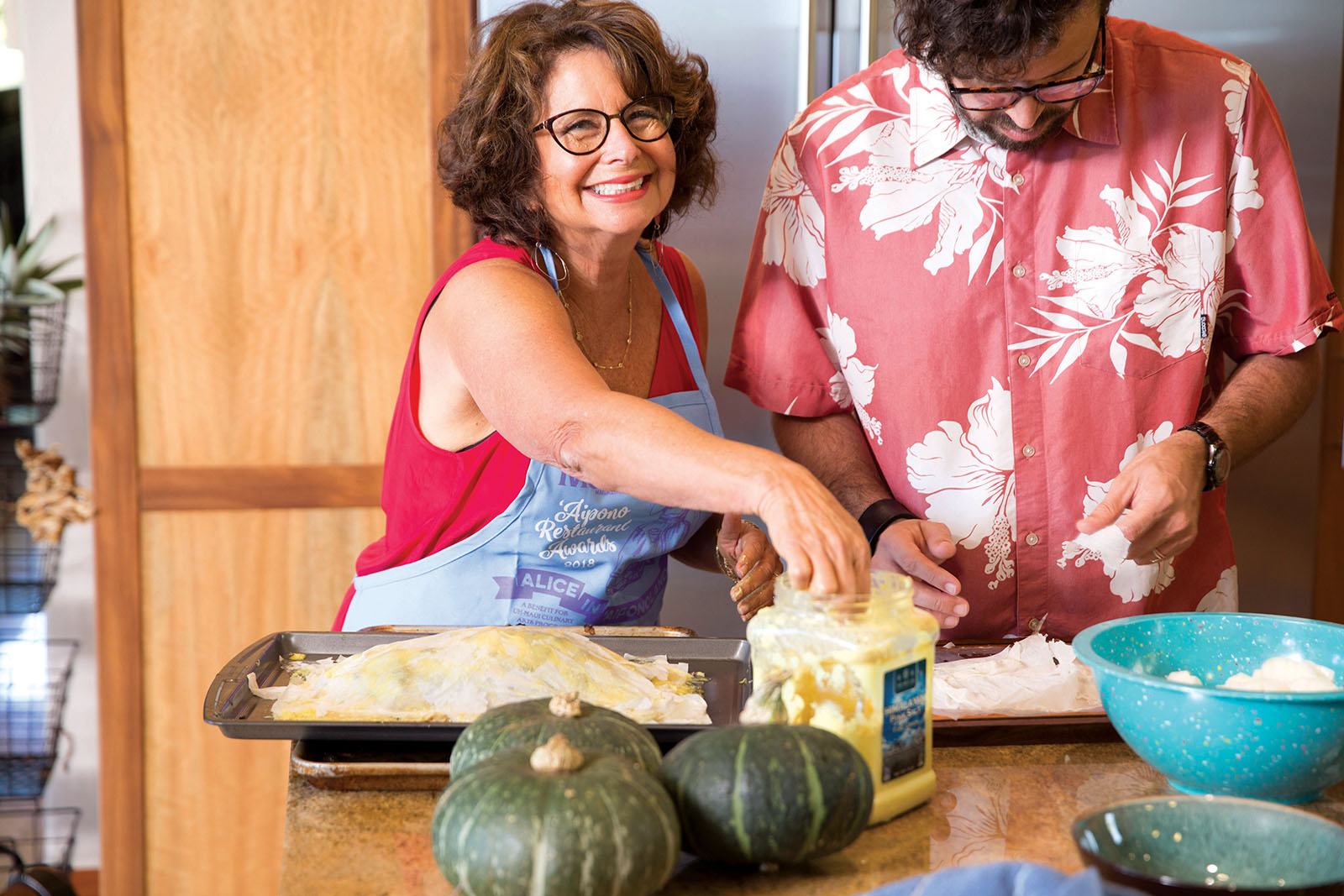
She asks, “Who wants to help with the Wellington?” Diane steps up and receives a demonstration on gently separating the leaves of phyllo dough. “I’ve eaten phyllo, but have never made anything with it,” she admits, as she slowly peels apart a tissue-thin sheet and holds it gingerly in the air. “You don’t have to be so careful about tearing it, because you’ll have twenty layers. Throw it down and spread our vegan butter on each layer,” says Nick, gesturing at the baking sheet nearby. She says that in culinary school in Washington State, students learned to make phyllo by rolling the dough in a laminator to reach the proper thinness. “This is one of the few products we don’t make at Moku Roots. We don’t have a laminator.” Seeing Rita’s puzzled expression, I explain: “Laminators are like manual pasta rollers, except they are motorized and go forward and reverse. With each pass between the rollers, the dough’s thickness decreases.”
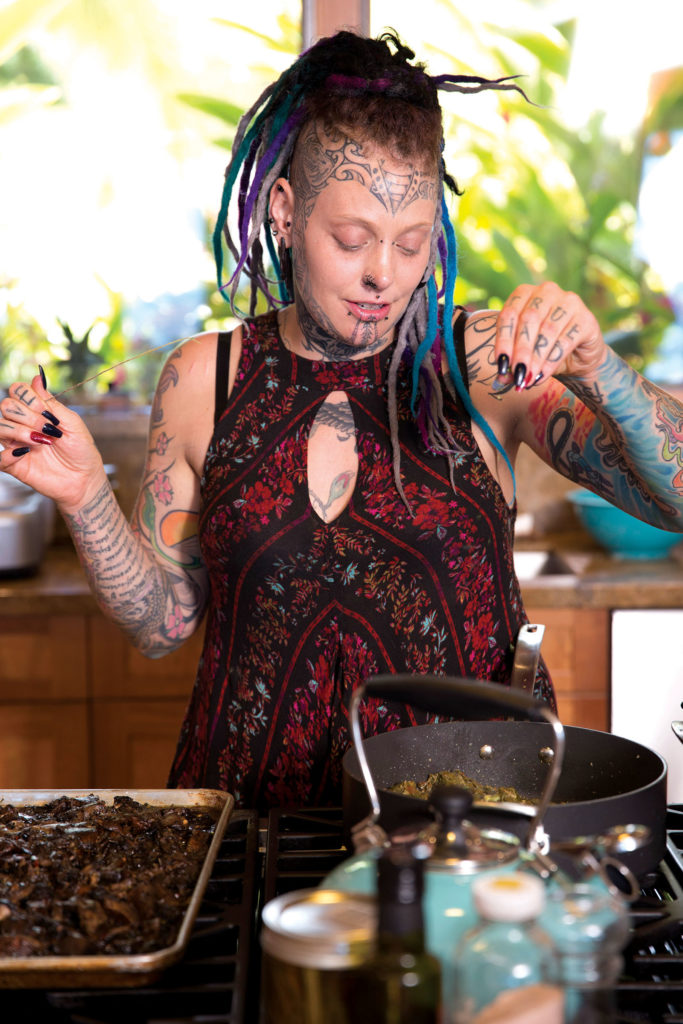
Alexa tells us that about 90 percent of the ingredients used at Moku Roots are purchased from local farms. “And nearly everything we serve is made from scratch in our kitchen.”
“We make all our cheeses, creams and vegan butter in-house,” Nick adds. “I make mine with macadamia nuts. You can use nuts like almond or cashew, but macadamia is what I’ve transitioned to using here on Maui. We strive to reduce our carbon footprint by sourcing locally grown product.”
As she sets Lehia the task of spreading turmeric-tinged vegan butter onto each phyllo sheet, Chef explains, “To create the crunchy croissant-like layers, you need fat.” She steps to the right, to a pan filled with roasted portobellos that have marinated for seventy-two hours, lifts a handful and squeezes the liquid from the chunky mushroom mass, then mounds it onto the dough. “Okay, repeat the layering process and I’ll show you how to seal the edges when you’re done.”
Lū‘au dip is up next, along with a chemistry lesson. Alexa and Nick explain that lū‘au, the leaves of the kalo plant (Colocasia esculenta), contain calcium oxalate crystals—think the plant world’s version of fiberglass. Alexa says, “We cook it for four to six hours to break down the crystals.” “If not, your mouth and throat will itch and get irritated,” adds Chef Nick. “It’s not toxic if you ingest the oxalate, but it isn’t recommended,” Alexa adds.
Point taken. Now, back to the dip. Chef Nick says, “First we bloom the garlic and onions in the butter until it’s fragrant.” She adds cassava (tapioca) to the lū‘au leaf and onion sauté, then the macadamia-nut cream, and lickety-split, the dip is complete.


